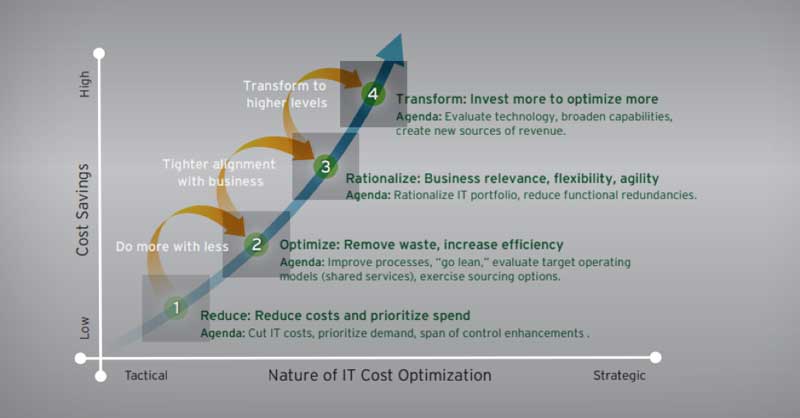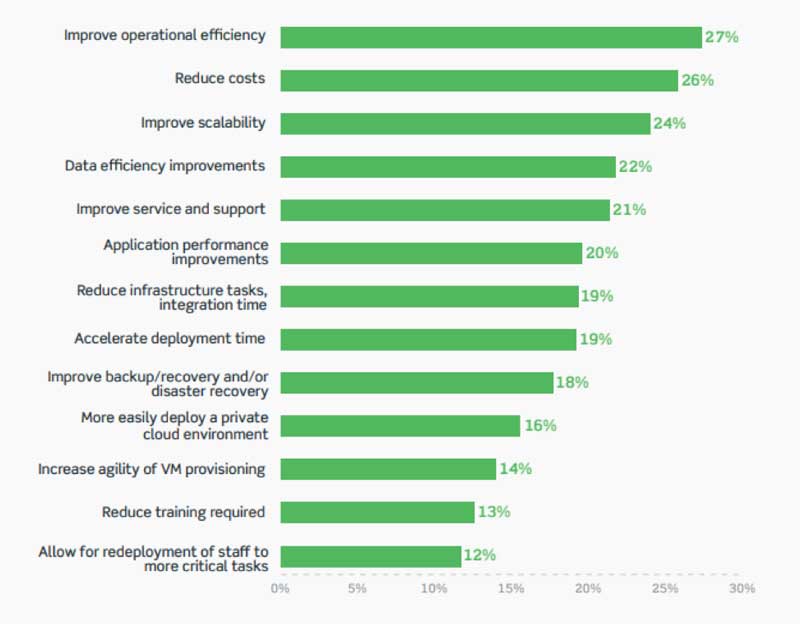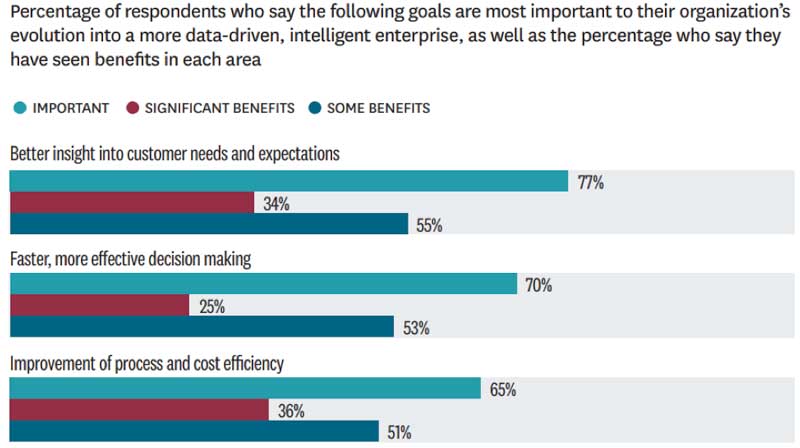How important is cost optimization in IT? Is it synonymous with resource optimization? Is it a one-off, budget crunching exercise to meet the numbers? Or a continuous, defined, and implemented set of processes designed to wring the last bit of value out of every corporate dollar? Does it take into consideration future growth, trends, and business needs or focus on bringing the current budget in line with projections?
There are lots of different views out there and a million different angles to tackle them, so let’s start by clarifying what it means, according to Gartner: Cost optimization is a business-focused, continuous discipline to drive spending and cost reduction while maximizing business value.
It includes:
Obtaining the best pricing and terms for all business and IT purchases
Standardizing, simplifying and rationalizing platforms, applications, processes, and services
Automating and digitalizing IT and business operations
Cognizant’s whitepaper on cost optimization defines a step-by-step framework that moves from tactical to strategic initiatives for driving innovation while reducing IT costs.

Source: Cognizant
Out of these arise various areas and functions where IT can specifically realize gains in spending and position operational processes for continuous improvement. There are also certain pitfalls to look out for, mainly because "cost optimization” and "cost-cutting” are not the same thing.
Work with Vendors on Pricing and Terms
IT departments have long been focused on getting the best price for requested purchases, but terms can also help optimize costs. These include not just terms of payment or long-term contracts to realize gains, but also trade-offs and less tangible benefits. Training credits or on-site classes, implementation support, on-site representation, and marketing cooperation can make the dollars spent on a single purchase worth more to the organization.
Be wary of vendor lock-in through contracts with very high exit costs, extremely long terms, and anything that suggests working with a competitor could be a violation. These types of line items can limit an organization's ability to test out and move to new technologies and innovations. Establish win-win relationships with vendors to level up to speed and accuracy and minimize the risk of new implementations.
Consolidate Shared Services
The System, Storage, and Network Administration teams should function under the same team. This eliminates duplication of efforts, provides consistency in operations, and minimizes rework or integration later on.
While there is a trend to pair Application and Production Support services exclusively with the product groups they support, this can prevent those resources from contributing to the organization as a whole.
Not all resources benefit from being part of a shared services team, but there are hybrid models that can consolidate them in similar product groups. These groups are still part of the IT staff, but with their priorities defined by the business side.
Keeping IT staff engaged with each other while still being part of their individual business groups allows the flow of ideas, knowledge, and information without sacrificing the support the business products need. This also will enable workloads to be balanced and shared better.
Consolidate and Standardize the Infrastructure
The core of all IT-specific cost-cutting lies in integrating, updating, and modernizing hardware devices and software applications, whatever forms they might be in. Legacy systems might be bleeding revenue every day, but there is strong resistance as well as inherent risk in moving to newer systems that expedite processes they support.
This can be especially difficult when independent projects, different business functions, or mergers in various geolocations have brought redundancies into the organization as a whole.
Present-day cloud infrastructure solutions can help eliminate complexities and simplify software management and upgrades in three steps:
Adopt a hybrid, multi-cloud architecture to speed up processes
Make the infrastructure agile and convergent
Unify diverse systems to centralize control and administration
Check systems for actual usage — hardware costs add up quickly when the workload is lighter than the build-out and licensing. Be careful when it comes to software licensing – even the best pricing models can be skewed when workloads are consolidated to under-used systems. Particularly with databases, this has shown to be complex and potentially expensive in traditional infrastructures.
Implementing a Hyperconverged Infrastructure (HCI) can minimize the number of resources required to maintain computing, storage, and network systems. While investment in HCI has up-front costs, it can significantly reduce overall data center footprint, maintenance, and support expenses. In addition to operational efficiency, hyperconvergence adds scalability, data efficiency, and faster deployment to the mix.

Source: Nutanix State of the Enterprise Datacenter Report
Improve Data Management
Data is a company-wide asset and should be treated and managed accordingly. Allowing people across the enterprise to use the data opens the door for business value through faster, more accurate, and improved decisions.
A survey by Harvard Business Review revealed that cost efficiency is a significant benefit of a data-driven enterprise.

Source: Harvard Business Review
It’s about giving the right data to the right people at the right time in a form that they can use. When organizations get strategic about data and analytics, they can instill a data maturity framework that goes from opportunistic to systematic to transformational in its usage. This framework may save up to 25% of the company's revenue.
Digitize and Automate Service and Support
Automate the provisioning of business services, information updates, compute resources, and any other process that are repeated regularly. Digitizing internal, repeatable processes allows staff to move on to more business goal-oriented pursuits, maximizing actual productivity and ROI on a daily basis.
Research from Gartner revealed that by 2022, two-thirds of all customer experience projects will make use of IT, up from 50 percent in 2017. Customer support through friendly chatbots, also called virtual customer assistants (VCAs), is becoming more common and can be an effective use of resources. If a majority of support questions are repeated, these answers are known and can be automated. This will leave support staff to give real attention to the customers presenting with deeper issues.
Organizations reported a reduction of up to 70% in call, chat, and email inquiries after implementing a VCA, as per the Gartner study. They also reported a 33% cost saving per voice engagement.
Continuous Discipline
A continuous discipline of cost optimization incorporates capturing ideas and getting them into the review and adoption pipeline in a way that is simple and inherent to the corporate culture. Many smaller, cost-optimizing projects can be found from listening to the "Somebody should fix XYZ” within the organization.
Making the capture and review of these items part of company culture can provide more than simple ongoing items for optimizing. They begin to change how people look at their jobs and companies once they realize they can contribute to making things better, faster, cheaper. That will optimize the cost of human resources to a measurable degree.
Focus on Cost Optimization over Cost Cutting
Cost-cutting can have detrimental effects on the business’ future while offering minimal cost optimization benefits. Cuts may have that short-term, immediate bump to the bottom line, but the organization will likely have to spend more to recover the lost ground in the future.
This includes retaining staff, pushing important projects out to a later date, and limiting spend on infrastructure, architecture, and process development. Be wary of taking the cost-cut method; it rarely yields the overall benefits a business really needs.
Don’t Let Costs Be a Detriment to Growth
No organization should focus on cost optimization over growth opportunities enabled by technology and information-driven approaches. Organizations are best served by adopting new technologies, making resource optimization a part of company culture, reviewing existing processes and improving them, consolidating wherever possible, collecting and analyzing data from all relevant sources, and moving relentlessly ahead on the path of digital transformation.
Featured Image: Pexels
Dipti Parmar is a contributing writer. She has written for CIO.com, Entrepreneur, CMO.com and Inc. Magazine. Follow her on Twitter @dipTparmar.
© 2020 Nutanix, Inc. All rights reserved. For additional legal information, please go here.


